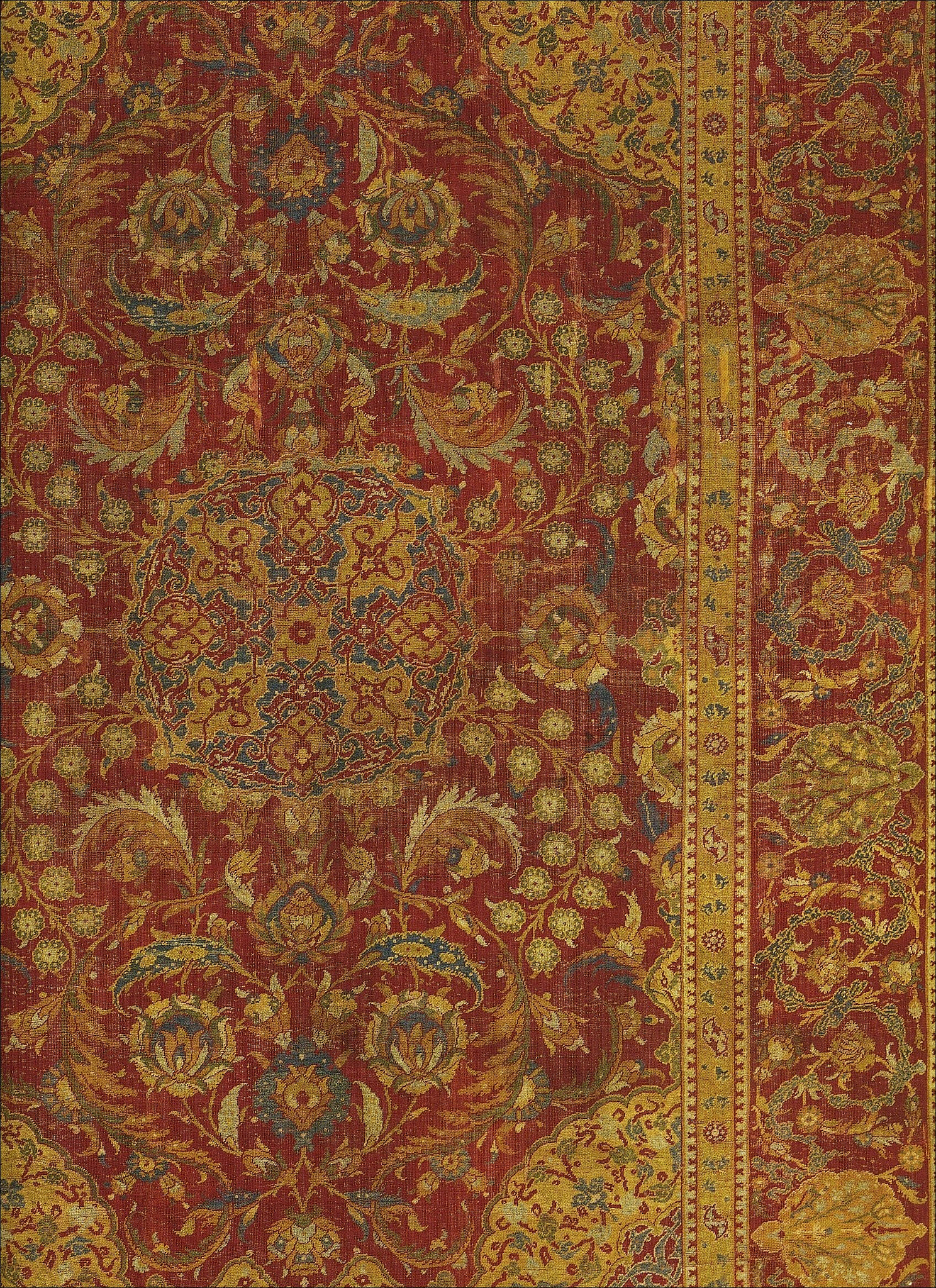|
Blumenthal
Ottoman court carpet, Egypt, late 16th–17th century. The Metropolitan Museum of Art, New York
Ottoman
Court Carpet
Date: late 16th–17th century
Geography: Egypt
Culture: Islamic
Medium: Wool (warp, weft and pile); asymmetrically
knotted pile
Dimensions: Rug: Gr. L. 226 1/4 in. (574.7 cm) Gr. W. 112
in. (284.5 cm) L. of proper right: 223in. (566.4cm) L. of proper left:
224in. (569cm) Tube: L. 131 1/4 in. (333.4 cm) Diam. 11 in. (27.9 cm)
Classification: Textiles-Rugs Credit Line: Bequest of George Blumenthal,
1941
Accession Number: 41.190.257
This artwork is not on display
Description
This splendid carpet, with feathery leaves, stylized
lotus flowers, and tightly curled cloud‑band scrolls, displays
characteristics associated with a group of carpets of debated provenance.
While the wool and weaving methods of this group are akin to carpets woven
in Egypt, their designs probably were produced in Istanbul. Documents
reveal that on at least one occasion in 1585, the Ottoman sultan Murad III
requested that a number of Cairene weavers, along with a quantity of
Egyptian wool, be brought to the court in Istanbul. Such interactions may
explain the unexpected combination of materials, technique, and design
found in these carpets.
Provenance
George and Florence Blumenthal,
Paris and New York (by 1935–41)
.JPG)
.JPG)
.JPG)
.JPG)
.JPG)

|

